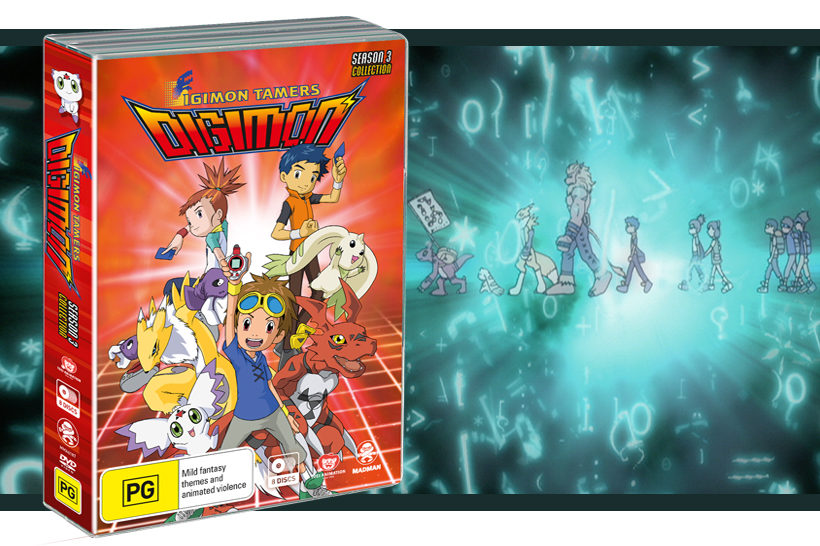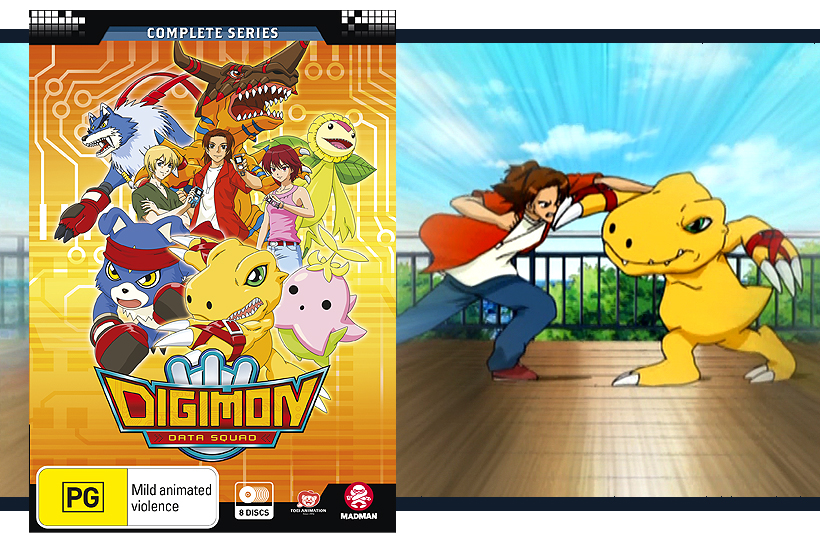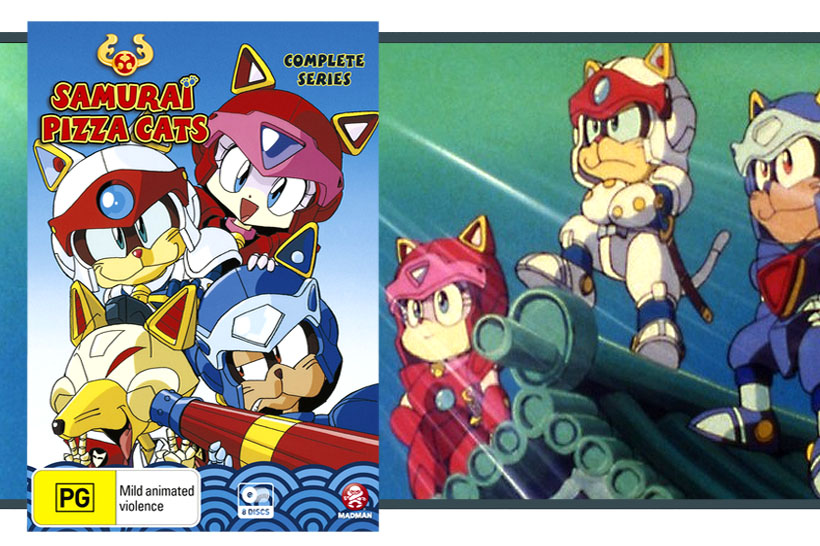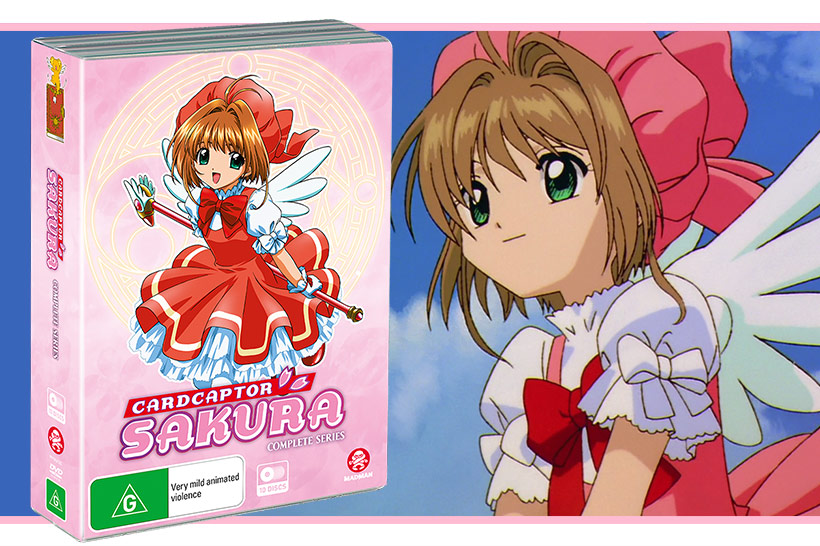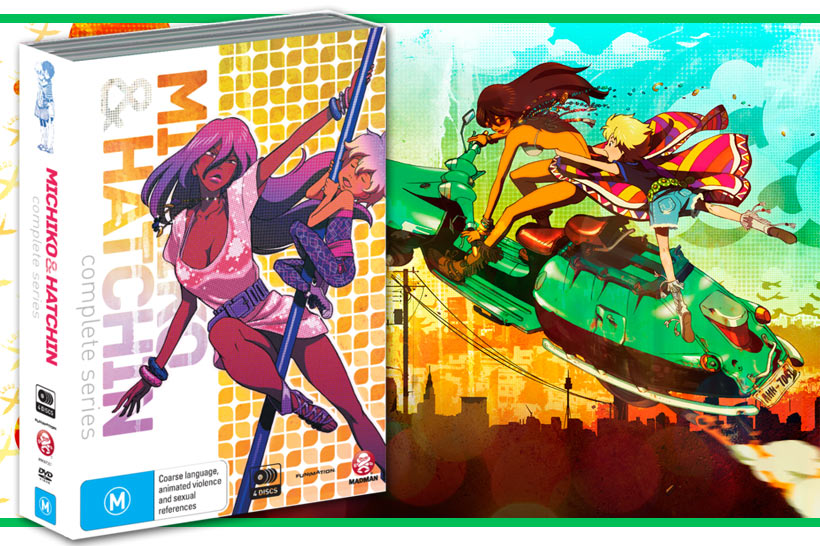When it comes to shows from your childhood, impartiality can be difficult. Attempting to separate the positive memories of watching early morning television on the weekends from the actual narrative proficiency and entertainment value of a show can be nigh impossible in these circumstances, so strong is the desire for things to be exactly as we remember them. This is the position I find myself in as Digimon Tamers, the third season in the Digimon animated series, is one of my all-time favourite shows from my childhood. But despite any initial trepidation in revisiting a series that was so formative to my taste in television, I can honestly say that Digimon Tamers is undoubtedly the best season in the Digimon series. If it sounds like I’m biased, I am. But if it helps, I’m fully aware of that.
In the world of Digimon Tamers, the events of Digimon Adventure and Digimon Adventure 02 never occurred, and were only part of a television show based on the popular Digimon card game and video games. But when Takato Matsuki uses a strange blue card on his card reader, he inadvertently creates his own partner Digimon, a child-like raptor Digimon named Guilmon. As he tries to figure out how to hide his new friend from his parents, Takato comes across other ‘Digimon Tamers’; Rika Nonaka and her partner Renamon, and Henry Wong and his partner Terriermon. Each Tamer has conflicting ideas about how Digimon should be treated, but their disagreements take a backseat when hostile Digimon start escaping from the digital realm to wreak havoc in the real world.
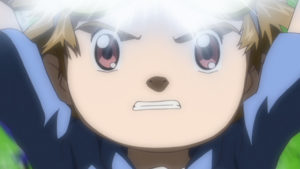
If your favourite episodes from the original Digimon Adventure series were the ones that involved the gang traversing Tokyo with their digital companions, then you’ll probably love Digimon Tamers. The entire first half of the series is like this, showing the struggles each Tamer faces as they try to keep their Digimon a secret from their families and how the presence of these creatures changes their lives. This relates quite heavily to how Takato, Rika, and Henry believe Digimon should be treated, and eventually forms the basis for strong individual character arcs. Of course, the human characters aren’t the only ones who get this treatment, and each of their Digimon partners are treated just as well by the plot in terms of character growth. Digimon Tamers is surprisingly full of rewarding character and narrative arcs, and expertly explores individual characters without marginalizing any of them. This is a continual theme throughout the series, and the characters (both human and Digimon alike) never really stop changing, and it becomes difficult to separate the main cast from support characters when each has such a palpable influence on the main plot.
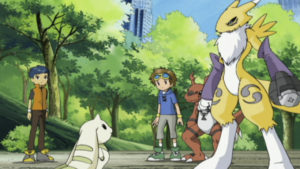
Digimon Tamers could have easily become a dull ‘monster of the week’ type show, but the material is elevated by a focused overarching narrative peppered with character drama. There is a very heavy emphasis on partnership in Digimon Tamers, both thematically and according to the in-world logic of the series. Takato and the gang use cards from the Digimon card game to modify their partners in battle, learning which combinations are the best in different scenarios. But the kids also struggle with putting their partners in danger and whether they should force their Digimon to fight at all, when all they can do in return is stand on the sidelines. It’s a very compelling plot, and manifests itself in different ways: with Takato struggling as he watches Guilmon grow and change, Rika and Renamon defining and redefining their partnership, and Henry learning that letting Terriermon fight doesn’t make him a bad person.
Amazingly, the animation holds up well given that Digimon Tamers reached its fifteenth anniversary milestone last year. Of particular mention are the Digivolution animations of Guilmon, Renamon, and Terriermon. The sequence shows the main three transforming into their Champion forms, with their fur and skin tearing off their bodies to reveal the data beneath, fresh skin then reforming over their new shape. It’s a visual sequence that is re-used in most episodes, but who can blame them for recycling footage, especially when it’s this good? They are fantastic sequences of animation, and those images have stuck with me ever since I first saw the episodes air on television. Of course, it wouldn’t be Digimon without a little bit of uncanny 3D animation, and the Ultimate form Digivolution sequences have this in spades. But other than this awkward CG and some stilted movement, Digimon Tamers has aged surprisingly well.
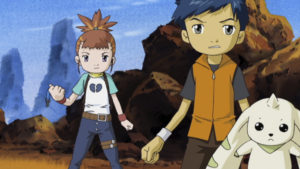
Any minor issues I have with Digimon Tamers stems from its English adaptation. Truthfully, it’s a good adaptation with solid voice acting and writing. However, it falls prey to many of the hallmarks that plagued English adaptations during the 90s and early 2000s, and that is the inability to accept silence and the need to soften tone with the addition of copious amounts of puns. Fans of Studio Ghibli films and their original and dubbed versions will recognise this removal of silences – Kiki’s Delivery Service is perhaps the best example of this, with many silences in the Japanese version being filled by Gigi’s anxious chatter in the adaptation. It is the same with Digimon Tamers, and the amount of puns and jokes that are fabricated to fill this silence compared to the Japanese version will be familiar to fans of other entries into the Digimon franchise and the original Yu-Gi-Oh! English adaptation. Credit where credit is due though, the Digimon Tamers adaptation knows when to dial it back and usually respects the important silences and emotional beats in the show.
It’s fantastic that there is now a way to own this series in its entirety, as many shows from this era are often relegated to only a handful of episodes scattered across several DVD releases, and I couldn’t be happier to finally have the opportunity to own Digimon Tamers in its entirety. I acknowledge there is a heavy amount of bias in this review, but I simply love this series and urge anyone who has even a passing interest in it after reading this review to check it out. Not every episode is gold, and some jokes wear themselves out extremely quickly, but this show is one of my absolute favourites and I can’t recommend it highly enough.
A review copy was provided by Madman Entertainment to the author for the purpose of this review.
©Akiyoshi Hongo, Toei Animation Film ©2001 Toei Animation Co., Ltd.

